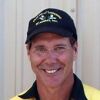From better trigger control to quicker draw and first shot, many shooters are looking for drills to fix or improve various skills. One great way to hone your skills is to design your own drills.
The most common mistake many shooters make in designing their own drills is trying to put too many things in at once. Simple drills work best to create a new level of understanding and execution of a skill. Complex drills are used to create skill sets, flow patterns, and immediate-action patterns.
Here are 10 things to think about as you create your own shooting drills.
1. It is not the drill that does the teaching. It is what you are paying attention to during the drill. Without changing anything but your attentional focus, you can shoot a variety of drills on the exact same target and learn different kinesthetic or visual skills.
2. Have one goal in mind — your learning objective — when you create the drill. The conscious mind can only focus on one thing at a time. As an example, trigger control has several key elements. Pick one element of trigger control and focus your attention on it while you shoot.
3. Organize and shape the skill. Whether you’re working on a kinesthetic or visual processing skill, picture what you want as the end result and then make yourself pay attention to each step that leads to the end result. By doing this, your mind puts things in proper sequence which leads to more consistent performance and higher levels of execution under pressure.
4. Awareness of what you’re doing as you’re doing it is a major contributor to permanent improvement, retention, or remediation of a skill. Sports psychologist Dr. James Loehr calls it “Level 1 Awareness.” Concentrate on finer and finer awareness and discrimination of details, both mental and physical. From the way you grip the gun to the feel of the connection between the soles of your feet and the ground, you must become aware of things, process them, and make use of them in your shooting to boost your performance.
5. Use variable and block training. Block training is doing the same thing over and over again. It’s useful when first learning a skill and to gain mastery over a particular skill. To improve overall learning and performance, use variable training: subtly changing the drill after two or three repetitions. This could be a different start position, moving before starting the drill, walking away from the position and then coming back, a different target, a different par time, etc. Use your imagination.
6. Challenge yourself constantly. Change up the drill as you gain mastery of it. Increase the distance, decrease the time, make the target harder, shoot against an opponent, change the target order, do it on the move. Always look for ways to boost performance — use pressure as an ally.
7. Integrate the skill into your overall sequence. As soon as you feel rock solid with the skill, apply it as part of an overall sequence. Whether competing or executing life-saving immediate action drills, put that skill to work and apply it.
8. Be patient with yourself. You did not get to where you are today overnight. You will not achieve miraculous improvement overnight either. Be patient and growth will happen. It is the consistent, disciplined approach to learning and performance that pays off with high levels of sustainable skill.
9. Rotate to different skills every few days to build overall, balanced skill. Spending too much time on one skill leads to neglect in other skills.
10. Keep a journal of your performance. If you want to really build skill on a long term basis, keep a written record of your progress. What was the goal? Drill type? Attentional focus? How did you fix a problem? Why were you successful? What is your next goal? These things matter if you are serious about training.
Conclusion
Learning to use your imagination to create successful training is a prerequisite to building skill. Your mind is as unique as your fingerprint. By creating something that works specifically for what you are looking for, you build a high-definition training solution that works the way you want. It also fires up your imagination in other areas and leads to higher levels of learning!


